 |
| May 28, 2019 | Volume 15 Issue 20 |
Mechanical News & Products
Designfax weekly eMagazine
Archives
Partners
Manufacturing Center
Product Spotlight
Modern Applications News
Metalworking Ideas For
Today's Job Shops
Tooling and Production
Strategies for large
metalworking plants
What's a SLIC Pin®? Pin and cotter all in one!
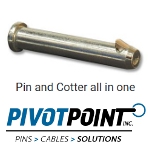 The SLIC Pin (Self-Locking Implanted Cotter Pin) from Pivot Point is a pin and cotter all in one. This one-piece locking clevis pin is cost saving, fast, and secure. It functions as a quick locking pin wherever you need a fast-lock function. It features a spring-loaded plunger that functions as an easy insertion ramp. This revolutionary fastening pin is very popular and used successfully in a wide range of applications.
The SLIC Pin (Self-Locking Implanted Cotter Pin) from Pivot Point is a pin and cotter all in one. This one-piece locking clevis pin is cost saving, fast, and secure. It functions as a quick locking pin wherever you need a fast-lock function. It features a spring-loaded plunger that functions as an easy insertion ramp. This revolutionary fastening pin is very popular and used successfully in a wide range of applications.
Learn more.
Engineering challenge: Which 3D-printed parts will fade?
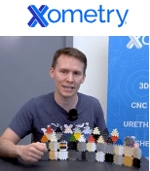 How does prolonged exposure to intense UV light impact 3D-printed plastics? Will they fade? This is what Xometry's Director of Application Engineering, Greg Paulsen, set to find out. In this video, Paulsen performs comprehensive tests on samples manufactured using various additive processes, including FDM, SLS, SLA, PolyJet, DLS, and LSPc, to determine their UV resistance. Very informative. Some results may surprise you.
How does prolonged exposure to intense UV light impact 3D-printed plastics? Will they fade? This is what Xometry's Director of Application Engineering, Greg Paulsen, set to find out. In this video, Paulsen performs comprehensive tests on samples manufactured using various additive processes, including FDM, SLS, SLA, PolyJet, DLS, and LSPc, to determine their UV resistance. Very informative. Some results may surprise you.
View the video.
Copper filament for 3D printing
 Virtual Foundry, the company that brought us 3D-printable lunar regolith simulant, says its popular Copper Filamet™ (not a typo) is "back in stock and ready for your next project." This material is compatible with any open-architecture FDM/FFF 3D printer. After sintering, final parts are 100% pure copper. Also available as pellets. The company says this is one of the easiest materials to print and sinter. New Porcelain Filamet™ available too.
Virtual Foundry, the company that brought us 3D-printable lunar regolith simulant, says its popular Copper Filamet™ (not a typo) is "back in stock and ready for your next project." This material is compatible with any open-architecture FDM/FFF 3D printer. After sintering, final parts are 100% pure copper. Also available as pellets. The company says this is one of the easiest materials to print and sinter. New Porcelain Filamet™ available too.
Learn more and get all the specs.
Copper foam -- so many advantages
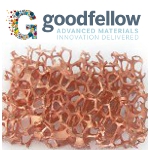 Copper foam from Goodfellow combines the outstanding thermal conductivity of copper with the structural benefits of a metal foam. These features are of particular interest to design engineers working in the fields of medical products and devices, defense systems and manned flight, power generation, and the manufacture of semiconductor devices. This product has a true skeletal structure with no voids, inclusions, or entrapments. A perennial favorite of Designfax readers.
Copper foam from Goodfellow combines the outstanding thermal conductivity of copper with the structural benefits of a metal foam. These features are of particular interest to design engineers working in the fields of medical products and devices, defense systems and manned flight, power generation, and the manufacture of semiconductor devices. This product has a true skeletal structure with no voids, inclusions, or entrapments. A perennial favorite of Designfax readers.
Learn more.
Full-color 3D-printing Design Guide from Xometry
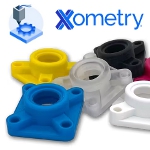 With Xometry's PolyJet 3D-printing service, you can order full-color 3D prints easily. Their no-cost design guide will help you learn about different aspects of 3D printing colorful parts, how to create and add color to your models, and best practices to keep in mind when printing in full color. Learn how to take full advantage of the 600,000 unique colors available in this flexible additive process.
With Xometry's PolyJet 3D-printing service, you can order full-color 3D prints easily. Their no-cost design guide will help you learn about different aspects of 3D printing colorful parts, how to create and add color to your models, and best practices to keep in mind when printing in full color. Learn how to take full advantage of the 600,000 unique colors available in this flexible additive process.
Get the Xometry guide.
Tech Tip: How to create high-quality STL files for 3D prints
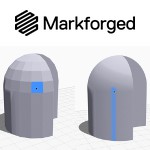 Have you ever 3D printed a part that had flat spots or faceted surfaces where smooth curves were supposed to be? You are not alone, and it's not your 3D printer's fault. According to Markforged, the culprit is likely a lack of resolution in the STL file used to create the part.
Have you ever 3D printed a part that had flat spots or faceted surfaces where smooth curves were supposed to be? You are not alone, and it's not your 3D printer's fault. According to Markforged, the culprit is likely a lack of resolution in the STL file used to create the part.
Read this detailed and informative Markforged blog.
Test your knowledge: High-temp adhesives
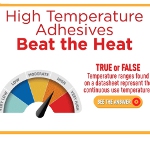 Put your knowledge to the test by trying to answer these key questions on how to choose the right high-temperature-resistant adhesive. The technical experts from Master Bond cover critical information necessary for the selection process, including questions on glass transition temperature and service temperature range. Some of the answers may surprise even the savviest of engineers.
Put your knowledge to the test by trying to answer these key questions on how to choose the right high-temperature-resistant adhesive. The technical experts from Master Bond cover critical information necessary for the selection process, including questions on glass transition temperature and service temperature range. Some of the answers may surprise even the savviest of engineers.
Take the quiz.
Engineer's Toolbox: How to pin a shaft and hub assembly properly
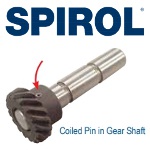 One of the primary benefits of using a coiled spring pin to affix a hub or gear to a shaft is the coiled pin's ability to prevent hole damage. Another is the coiled pin absorbs wider hole tolerances than any other press-fit pin. This translates to lower total manufacturing costs of the assembly. However, there are a few design guidelines that must be adhered to in order to achieve the maximum strength of the pinned system and prevent damage to the assembly.
One of the primary benefits of using a coiled spring pin to affix a hub or gear to a shaft is the coiled pin's ability to prevent hole damage. Another is the coiled pin absorbs wider hole tolerances than any other press-fit pin. This translates to lower total manufacturing costs of the assembly. However, there are a few design guidelines that must be adhered to in order to achieve the maximum strength of the pinned system and prevent damage to the assembly.
Read this very informative SPIROL article.
What's new in Creo Parametric 11.0?
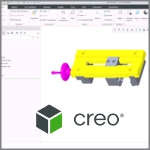 Creo Parametric 11.0 is packed with productivity-enhancing updates, and sometimes the smallest changes make the biggest impact in your daily workflows. Mark Potrzebowski, Technical Training Engineer, Rand 3D, runs through the newest functionality -- from improved surface modeling tools to smarter file management and model tree navigation. Videos provide extra instruction.
Creo Parametric 11.0 is packed with productivity-enhancing updates, and sometimes the smallest changes make the biggest impact in your daily workflows. Mark Potrzebowski, Technical Training Engineer, Rand 3D, runs through the newest functionality -- from improved surface modeling tools to smarter file management and model tree navigation. Videos provide extra instruction.
Read the full article.
What's so special about wave springs?
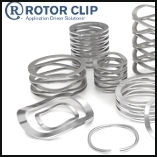 Don't settle for ordinary springs. Opt for Rotor Clip wave springs. A wave spring is a type of flat wire compression spring characterized by its unique waveform-like structure. Unlike traditional coil springs, wave springs offer an innovative solution to complex engineering challenges, producing forces from bending, not torsion. Their standout feature lies in their ability to compress and expand efficiently while occupying up to 50% less axial space than traditional compression springs. Experience the difference Rotor Clip wave springs can make in your applications today!
Don't settle for ordinary springs. Opt for Rotor Clip wave springs. A wave spring is a type of flat wire compression spring characterized by its unique waveform-like structure. Unlike traditional coil springs, wave springs offer an innovative solution to complex engineering challenges, producing forces from bending, not torsion. Their standout feature lies in their ability to compress and expand efficiently while occupying up to 50% less axial space than traditional compression springs. Experience the difference Rotor Clip wave springs can make in your applications today!
View the video.
New Standard Parts Handbook from JW Winco
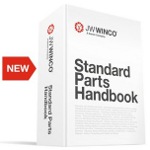 JW Winco's printed Standard Parts Handbook is a comprehensive 2,184-page reference that supports designers and engineers with the largest selection of standard parts categorized into three main groups: operating, clamping, and machine parts. More than 75,000 standard parts can be found in this valuable resource, including toggle clamps, shaft collars, concealed multiple-joint hinges, and hygienically designed components.
JW Winco's printed Standard Parts Handbook is a comprehensive 2,184-page reference that supports designers and engineers with the largest selection of standard parts categorized into three main groups: operating, clamping, and machine parts. More than 75,000 standard parts can be found in this valuable resource, including toggle clamps, shaft collars, concealed multiple-joint hinges, and hygienically designed components.
Get your Standard Parts Handbook today.
Looking to save space in your designs?
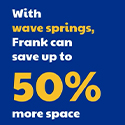 Watch Smalley's quick explainer video to see how engineer Frank improved his product designs by switching from traditional coil springs to compact, efficient wave springs. Tasked with making his products smaller while keeping costs down, Frank found wave springs were the perfect solution.
Watch Smalley's quick explainer video to see how engineer Frank improved his product designs by switching from traditional coil springs to compact, efficient wave springs. Tasked with making his products smaller while keeping costs down, Frank found wave springs were the perfect solution.
View the video.
Top die casting design tips
 You can improve the design and cost of your die cast parts with these top tips from Xometry's Joel Schadegg. Topics include: Fillets and Radii, Wall Thicknesses, Ribs and Metal Savers, Holes and Windows, Parting Lines, and more. Follow these recommendations so you have the highest chance of success with your project.
You can improve the design and cost of your die cast parts with these top tips from Xometry's Joel Schadegg. Topics include: Fillets and Radii, Wall Thicknesses, Ribs and Metal Savers, Holes and Windows, Parting Lines, and more. Follow these recommendations so you have the highest chance of success with your project.
Read the full Xometry article.
What's the latest from 3D Systems? Innovations for different industries, processes
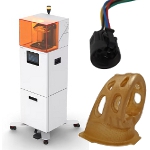 3D Systems unveiled several new solutions at the RAPID+TCT 2025 show in April designed to change the way industries innovate. From new 3D printers and materials for high-mix, low-volume applications to marked improvements in how investment casting can be done, learn what is the state of the art from the original inventors of 3D printing.
3D Systems unveiled several new solutions at the RAPID+TCT 2025 show in April designed to change the way industries innovate. From new 3D printers and materials for high-mix, low-volume applications to marked improvements in how investment casting can be done, learn what is the state of the art from the original inventors of 3D printing.
Read the full article.
Clever! Indexing plungers with chamfered pins
 JW Winco has developed a new type of indexing plunger -- GN 824 -- that can independently latch into edges and grooves. This is made possible by a chamfered plunger pin. When the chamfered pin encounters a raised latching geometry, it retracts and then springs back out again once it reaches the latching point. This new indexing plunger can be ordered with axial thread for fastening and a black plastic knob for operating the indexing plunger. In a clever design, the plunger pin can be adjusted by 360 degrees to ensure that it encounters the mating surface perpendicularly. This hardware is well suited for transport frames, mechanisms, or covers that need to be locked in place quickly and securely, especially without the need for manual intervention.
JW Winco has developed a new type of indexing plunger -- GN 824 -- that can independently latch into edges and grooves. This is made possible by a chamfered plunger pin. When the chamfered pin encounters a raised latching geometry, it retracts and then springs back out again once it reaches the latching point. This new indexing plunger can be ordered with axial thread for fastening and a black plastic knob for operating the indexing plunger. In a clever design, the plunger pin can be adjusted by 360 degrees to ensure that it encounters the mating surface perpendicularly. This hardware is well suited for transport frames, mechanisms, or covers that need to be locked in place quickly and securely, especially without the need for manual intervention.
Learn more.
New surface treatment could improve refrigeration efficiency
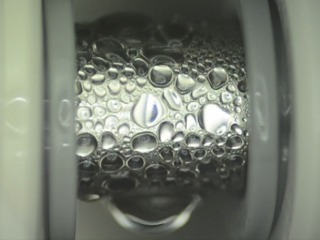
Specialized thin coatings developed by the MIT team cause even low-surface-tension fluids to readily form droplets on the surface of a pipe, as seen here, which improves the efficiency of heat transfer. [Image courtesy: MIT researchers]
By David L. Chandler, MIT
Unlike water, liquid refrigerants and other fluids that have a low surface tension tend to spread quickly into a sheet when they come into contact with a surface. But for many industrial processes, it would be better if the fluids formed droplets, which could roll or fall off the surface and carry heat away with them.
Now, researchers at MIT have made significant progress in promoting droplet formation and shedding in such fluids. This approach could lead to efficiency improvements in many large-scale industrial processes including refrigeration, thus saving energy and reducing greenhouse gas emissions.
The new findings are described in the journal Joule, in a paper by recent graduate and postdoc Karim Khalil PhD '18, professor of mechanical engineering Kripa Varanasi, professor of chemical engineering and Associate Provost Karen Gleason, and four others.
Over the years, Varanasi and his collaborators have made great progress in improving the efficiency of condensation systems that use water, such as the cooling systems used for fossil-fuel or nuclear power generation. But other kinds of fluids -- such as those used in refrigeration systems, liquification, waste heat recovery, and distillation plants, or materials such as methane in oil and gas liquifaction plants -- often have very low surface tension compared to water, meaning that it is very hard to get them to form droplets on a surface. Instead, they tend to spread out in a sheet, a property known as wetting.
But when these sheets of liquid coat a surface, they provide an insulating layer that inhibits heat transfer, and easy heat transfer is crucial to making these processes work efficiently. "If it forms a film, it becomes a barrier to heat transfer," Varanasi says. But that heat transfer is enhanced when the liquid quickly forms droplets, which then coalesce and grow and fall away under the force of gravity. Getting low-surface-tension liquids to form droplets and shed them easily has been a serious challenge.
In condensing systems that use water, the overall efficiency of the process can be around 40 percent, but with low-surface-tension fluids, the efficiency can be limited to about 20 percent. Because these processes are so widespread in industry, even a tiny improvement in that efficiency could lead to dramatic savings in fuel, and therefore in greenhouse gas emissions, Varanasi says.
By promoting droplet formation, he says, it's possible to achieve a four- to eightfold improvement in heat transfer. Because the condensation is just one part of a complex cycle, that translates into an overall efficiency improvement of about 2 percent. That may not sound like much, but in these huge industrial processes even a fraction of a percent improvement is considered a major achievement with great potential impact. "In this field, you're fighting for tenths of a percent," Khalil says.
Unlike the surface treatments Varanasi and his team have developed for other kinds of fluids, which rely on a liquid material held in place by a surface texture, in this case they were able to accomplish the fluid-repelling effect using a very thin solid coating -- less than a micron thick (one-millionth of a meter). That thinness is important to ensure that the coating itself doesn't contribute to blocking heat transfer, Khalil explains.
The coating, made of a specially formulated polymer, is deposited on the surface using a process called initiated chemical vapor deposition (iCVD), in which the coating material is vaporized and grafts onto the surface to be treated, such as a metal pipe, to form a thin coating. This process was developed at MIT by Gleason and is now widely used.
The authors optimized the iCVD process by tuning the grafting of coating molecules onto the surface, in order to minimize the pinning of condensing droplets and facilitate their easy shedding. The process could be carried out on location in industrial-scale equipment, and could be retrofitted into existing installations to provide a boost in efficiency. The process is "materials agnostic," Khalil says, and can be applied on either flat surfaces or tubing made of stainless steel, titanium, or other metals commonly used in condensation heat-transfer processes that involve these low-surface-tension fluids. "Whatever materials are used in your facility's heat exchanger, it tends to be scalable with this process," he adds.
Video shows the condensation of pentane, a low-surface-tension fluid. On the left, streaking of drops impairs heat transfer, while pentane with the new coating, at right, shows high droplet formation and good heat transfer.
The net result is that on these surfaces, condensing fluids like the hydrocarbons pentane or liquid methane, or alcohols like ethanol, will readily form small droplets that quickly fall off the surface, making room for more to form, and in the process shedding heat from the metal to the droplets that fall away.
One area where such coatings could play a useful role, Varanasi says, is in organic Rankine cycle systems, which are widely used for generating power from waste heat in a variety of industrial processes. "These are inherently inefficient systems," he says, "but this could make them more efficient."
The new coating is shown promoting condensation on a titanium surface, a material widely used in industrial heat exchangers.
"This new approach to condensation is significant because it promotes drop formation (rather than film formation) even for low-surface-tension fluids, which significantly improves the heat transfer efficiency," says Jonathan Boreyko, an assistant professor of mechanical engineering at Virginia Tech, who was not connected to this research. While the iCVD process itself is not new, he says, "showing here that it can be used even for the condensation of low-surface-tension fluids is of significant practical importance, as many real-life phase-change systems do not use water."
Saying the work is "of very high quality," Boreyko adds that "simply showing for the first time that a thin, durable, and dry coating can promote the dropwise condensation of low-surface-tension fluids is very important for a wide variety of practical condenser systems."
The research was supported by the Shell-MIT Energy Initiative partnership. The team included former MIT graduate students Taylor Farnham and Adam Paxson, and former postdocs Dan Soto and Asli Ugur Katmis.
Published May 2019
Rate this article
View our terms of use and privacy policy

